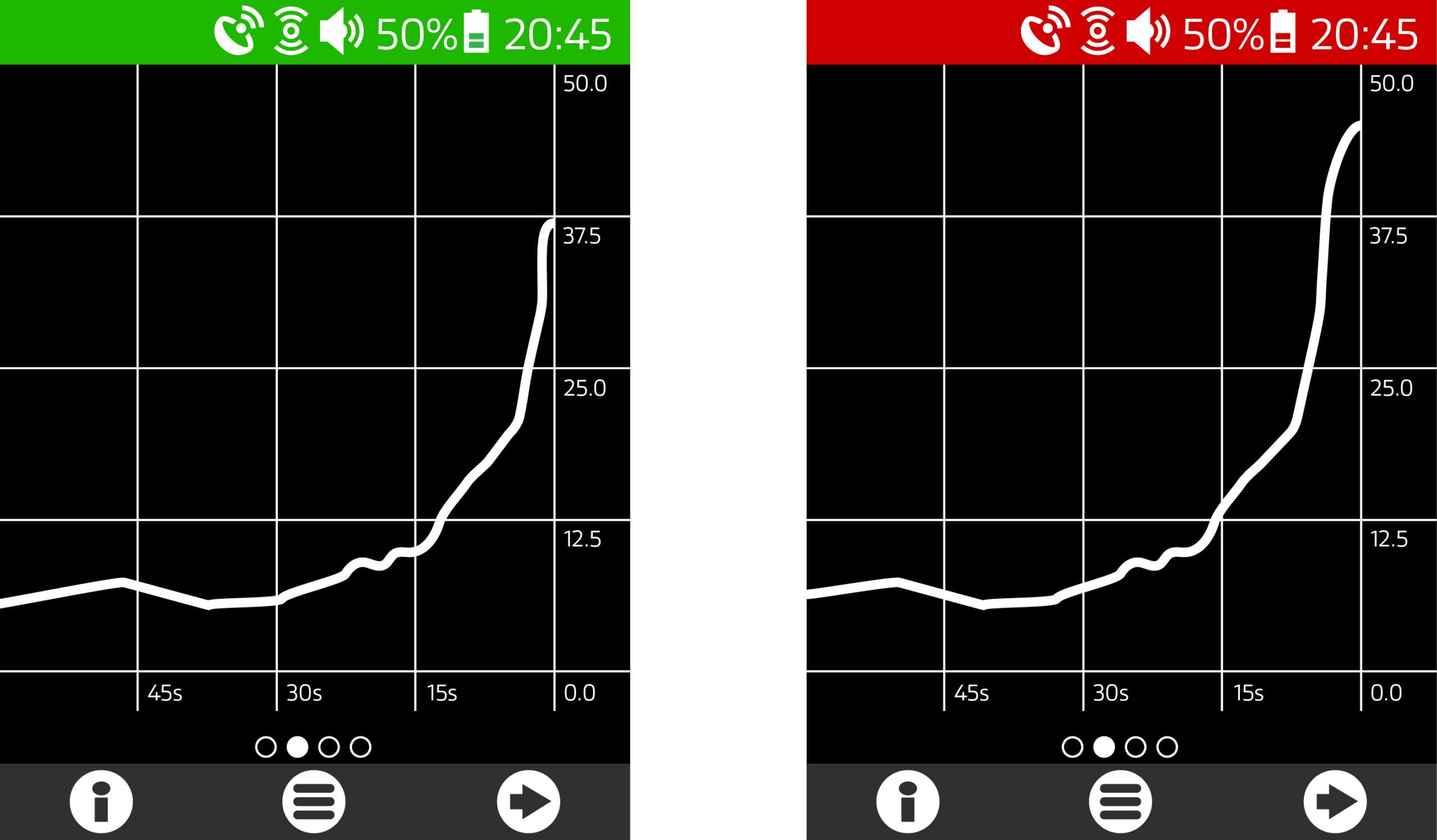The exceptional sniffing capabilities of then ChemPro family of handheld chemical detectors were introduced along with ChemPro100i well over 10 years ago.
Ever since, significant user stories and experiences have emerged where the use of trend display — a unique feature of Environics handheld chemical detectors — has played a key role in locating the threat source.
Many chemicals do not produce a distinct smell, nor any visible vapor. Sometimes even the reactions and symptoms caused by (at the time unknown) chemicals might be delayed. Having a tool that can “see” the immediate changes of the atmosphere, even before alarm triggering levels, combined with a functionality that helps the operator locate the possible location of the threat source, is vital in these instances.

Trend display in ChemProX UI, showing an increase in relative chemical concentration even before alarm triggering levels (on the left) and after an alarm is triggered (on the right).
This Could Happen Even in Your Household
Even though we do not see or think about it in our daily lives, chemical threats my occur inside our own homes.
Many household applications utilize some sort of chemicals in their operation. Perhaps the most obvious or common ones are applications that use refrigerants for cooling.
Halocarbon refrigerants — or “freons”, as often generically referred to — are used in many different cooling equipments. Freon vapors are mostly odorless and colorless, and in small amounts do not cause significant harm to health. However, continued exposure may lead to a series of unpleasant symptoms such as headache, nausea, and irritation to eyes and throat. Despite freons not being included in the main “measurement matrix” of ChemProX, thanks to its orthogonal sensor technology, the detector can still “see” otherwise invisible freon leaks, and even help to locate to source of the leak.
Using ChemPro Handheld Chemical Detectors on Refrigerant Leaks
Below are a few real life user scenarios from USA first response teams.
Supermarket Refrigerant Leak
The hazmat team responded to a refrigerant leak at a supermarket. The leak was in a mezzanine level mechanical room that was well ventilated.
The team had two crews trying to secure the leak and the only meter that that picked up anything was the ChemPro detector. Prior to having this device, the only way refrigerant concentration could be estimated would have been to use a 4-gas meter and calculate the concentration by the oxygen depletion.
“We currently have the ChemPro detector on our hazmat truck, which must be specially requested to respond on calls. I plan on relocating it to our heavy rescue…
While the ChemPro did not classify or identify the refrigerant, it did detected it using the Trend screen.”
“Gas” Leak
Units were alerted for an inside gas leak in a single-family dwelling. The first arriving unit entered the home with a standard four 4-gas meter (containing oxygen, combustible gas, carbon monoxide and hydrogen sulfide sensors) and checked all levels…They found no odor of natural gas and there were no changes in atmospheric readings on any of the sensors in their four-gas meter.
After investigating the dwelling, the crew members exited and two of them began complaining of dizziness and headaches. At that time a hazardous materials (HazMat) response was requested alerting our special operations team.
“Based on the symptoms the members were describing, and a report from the homeowner that a loud pop and hissing sound were heard coming from the basement utility room, we suspected a possible refrigerant leak. The only tool in our arsenal useful for detecting any of the refrigerant blends is the ChemPro handheld detector.
Two of our members entered the basement using the ChemPro and a PID. The ChemPro, in trend mode, led our guys right to the a/c unit in the basement utility room where they found a leak coming from the copper supply line going into the coil. The PID didn’t show any change in response. We continued to check the atmospheric conditions in the basement while using forced air ventilation to clear the refrigerant. The trend screen on the ChemPro allowed us to gauge the effectiveness of our ventilation efforts, and finally to determine when the atmosphere was safe for the residents to return home.”

Leave a Reply